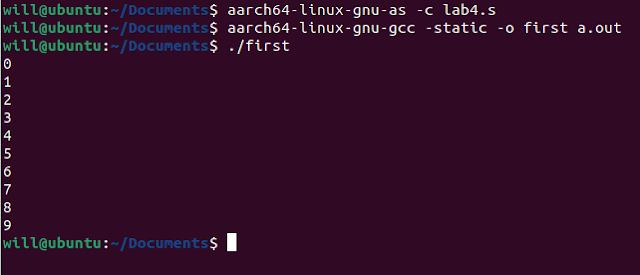SPO600 Lab 4

In lab 4, I have to do a simple program to print numbers from 0 to 30 with X86_64 and AArch64 Assembly. It was my bad to forget the passphrase of my SSH key, so I could not log in to the server to do the lab. Fortunately, I found a package on Ubuntu APT-GET library that simulates AArch64 architecture, which is QEMU . The command to install it: sudo apt-get install qemu-user gcc-aarch64-linux-gnu. With the program, I was able to compile and run AArch64 Assembly without ARM hardware like a Raspberry Pi 4. Back to the main program, this is my code to print from 0 to 9: .text .globl main min = 0 max = 10 main: mov x19, min loop: adr x1, msg mov x2, len mov x0, 1 mov x8, 64 svc 0 adr x23, msg add x19, x19, 1 mov x20, x19 add x20, x20, '0' strb w20, [x23,0]
